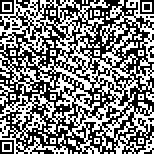| 摘要: |
| [摘要] 目的 研究Ghrelin对围术期神经认知障碍(PND)小鼠术后海马氧化应激及炎性反应的影响。方法 选择SPF级健康雄性C57BL/6J小鼠作为实验动物。通过水迷宫定位航行训练检测小鼠学习能力,将经挑选合格的小鼠随机分为Sham组、PND组、PND+Vehicle组和PND+Ghrelin组,每组12只。Sham组小鼠予腹腔注射5%水合氯醛麻醉后,切开小腿胫骨侧皮肤后缝合,不做任何手术和治疗措施,术毕予利多卡因胶浆镇痛。PND组小鼠予腹腔注射5%水合氯醛麻醉后行胫骨骨折髓内固定术,术毕予利多卡因胶浆进行术后镇痛,不予其他治疗干预。PND+Ghrelin组小鼠行胫骨骨折髓内固定术,操作方式同PND组,但在麻醉前2 h和苏醒后予腹腔注射Ghrelin(80 μg/kg),1次/d,连续7 d。PND+Vehicle组小鼠在麻醉前2 h和苏醒后予腹腔注射0.9%生理盐水(1.6 ml/kg),1次/d,连续7 d,其余干预措施同PND+Ghrelin组。术后第7天通过水迷宫空间探索实验测试四组小鼠的记忆能力。采用酶联免疫吸附试验(ELISA)检测血清中环氧合酶-2(COX-2)、高迁移族率蛋白B1(HMGB1)水平。通过ELISA和Western blot实验分别检测海马组织中丙二醛(MDA)、总超氧化物气化酶(T-SOD)和COX-2、HMGB1水平。结果 与Sham组比较,PND组、PND+Vehicle组和PND+Ghrelin组的逃避潜伏期更长,60 s内逃逸平台进入次数、目标象限停留时间占比降低,差异有统计学意义(P<0.05)。与PND组比较,PND+Ghrelin组的逃避潜伏期显著缩短,60 s内逃逸平台进入次数、目标象限停留时间占比升高,差异有统计学意义(P<0.05)。与Sham组比较,PND组、PND+Vehicle组、PND+Ghrelin组血清和海马组织的COX-2、HMGB1水平升高,差异有统计学意义(P<0.05)。与PND组相比,PND+Ghrelin组血清和海马组织的COX-2、HMGB1水平降低,差异有统计学意义(P<0.05)。与Sham组比较,PND组、PND+Vehicle组、PND+Ghrelin组海马组织的MDA水平升高、T-SOD水平降低,差异有统计学意义(P<0.05)。与PND组比较,PND+Ghrelin组海马组织MDA水平降低、T-SOD水平升高,差异有统计学意义(P<0.05)。结论 Ghrelin对PND小鼠具有保护作用,其机制可能与改善术后炎症及氧化应激反应有关。 |
| 关键词: 围术期神经认知障碍 Ghrelin 海马体 氧化应激 炎症 |
| DOI:10.3969/j.issn.1674-3806.2022.12.11 |
| 分类号:R 614 |
| 基金项目: |
|
| Effects of Ghrelin on oxidative stress and inflammatory response in the hippocampus of mice with perioperative neurocognitive disorder after surgery |
|
ZHAN Qiao-zhi, YAN Wen-jun
|
|
School of Clinical Medicine, Ningxia Medical University, Yinchuan 750004, China
|
| Abstract: |
| [Abstract] Objective To investigate the effects of Ghrelin on oxidative stress and inflammatory response in the hippocampus of mice with perioperative neurocognitive disorder(PND) after surgery. Methods Specific-pathogen-free(SPF) healthy male C57BL/6J mice were selected as the experimental animals. Through water maze positioning and navigation training, the learning ability of mice was tested, and the qualified mice were selected and randomly divided into Sham group, PND group, PND+Vehicle group and PND+Ghrelin group, with 12 mice in each group. The mice in the Sham group were anesthetized by intraperitoneal injection of 5% chloral hydrate, and the skin on the tibia side of the calf was incised and sutured. No surgery or treatment was performed, and lidocaine mucilage was administered to relieve pain after the operation. The mice in the PND group were anesthetized by intraperitoneal injection of 5% chloral hydrate and then underwent intramedullary fixation of tibial fractures. After the operation, lidocaine mucilage was administered for postoperative analgesia, and no other therapeutic interventions were required. The mice in the PND+Ghrelin group underwent intramedullary fixation for tibial fractures, and the operation method was the same as that of the PND group. Ghrelin(80 μg/kg) was intraperitoneally injected 2 hours before anesthesia and after recovery, once a day for 7 days. The mice in the PND+Vehicle group were intraperitoneally injected with 0.9% saline(1.6 ml/kg) 2 hours before anesthesia and after recovery, once a day for 7 consecutive days. The other interventions were the same as those in the PND+Ghrelin group. On the 7th day after the operation, the memory ability of the mice in the four groups was tested by the water maze space exploration experiment. The enzyme-linked immunosorbent assay(ELISA) method was used to detect the serum levels of cyclooxygenase-2(COX-2), high-mobility group box-1(HMGB1). The levels of malondialdehyde(MDA), total superoxide dismutase(T-SOD), COX-2 and HMGB1 in the hippocampus were detected by using ELISA method and Western blot method, respectively. Results The escape latency was longer in the PND group, the PND+Vehicle group and the PND+Ghrelin group than that in the Sham group, and the number of escape platform entries within 60 s, and the proportion of the target quadrant stay time in the PND group, the PND+Vehicle group and the PND+Ghrelin group were lower than those in the Sham group, and the differences were statistically significant(P<0.05). The escape latency in the PND+Ghrelin group was shorter than that in the PND group, and the number of escape platform entries within 60 s and the proportion of the target quadrant stay time in the PND+Ghrelin group were higher than those in the PND group, and the differences were statistically significant(P<0.05). Compared with those in the Sham group, the levels of COX-2 and HMGB1 in the serum and hippocampus in the PND group, the PND+Vehicle group, and the PND+Ghrelin group were increased, and the differences were statistically significant(P<0.05). Compared with those in the PND group, the levels of COX-2 and HMGB1 in the serum and hippocampus in the PND+Ghrelin group were decreased, and the differences were statistically significant(P<0.05). Compared with those in the Sham group, the levels of MDA in the hippocampus in the PND group, the PND+Vehicle group, and the PND+Ghrelin group were increased, and the levels of T-SOD in the PND group, the PND+Vehicle group, and the PND+Ghrelin group were decreased, and the differences were statistically significant(P<0.05). The level of MDA in the hippocampus tissues in the PND+Ghrelin group was lower than that in the PND group, and the level of T-SOD in the hippocampus tissues in the PND+Ghrelin group was higher than that in the PND group, and the differences were statistically significant(P<0.05). Conclusion Ghrelin has a protective effect on PND mice, and its mechanism may be related to the improvement of postoperative inflammation and oxidative stress. |
| Key words: Perioperative neurocognitive disorder(PND) Ghrelin Hippocampus Oxidative stress Inflammation |

